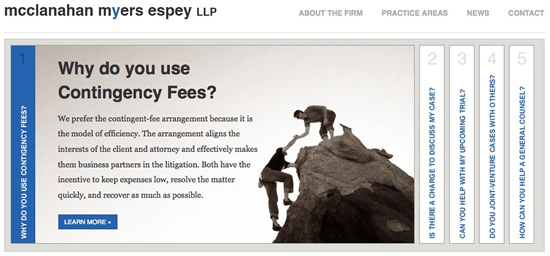Recent developments in the world of contingency fee business litigation and commercial arbitration
Bad news for Jeff Skilling
Former Enron CEO Jeff Skilling lost his most recent appeal to the 5th Circuit. He was originally sentenced to 24 years and $45 million in restitution. His convictions were affirmed, although he is still to be resentenced because of a sentencing enhancement that had been misapplied by the trial court. U.S. v. Skilling, ___ F.3d ___. 2011 WL 1290805, (5th Cir. 2011). Unless the U.S. Supreme Court agrees to revisit Mr. Skilling’s case again, it appears that he will remain in federal prison for a very long time.
Investors receive surprisingly large arbitration award.
According to The Wall Street Journal, Citigroup has been ordered to pay $54.1 million to two wealthy investors (a venture capital investor and a retired patent attorney) for losses they sustained on risky municipal bond funds that lost 77% of their value in the financial crisis. “The award by an industry arbitration panel is the largest ever levied against a major Wall Street brokerage in favor of individual investors . . . .” (Larger awards have been made to corporate investors.) The award included $17 million in punitive damages and $3 million in legal fees. Citigroup’s municipal bond funds are the subject of an SEC probe into whether the bank misled investors by failing to disclose the funds’ risks. The investors were neighbors, and the former Smith Barney broker testified on behalf of his former clients. Arbitration is mandatory in most Wall Street customer agreements, and this result appears to substantially exceed any previous award to individuals is such an investment advice dispute. It is good to see a case in which a FIRA arbitration worked out so well for the investors!
Lieck is out of luck!
The written contract for local counsel (Ed Lieck) provided that he would receive 10% of the first $50 million and 5% above $50 million of “recovered judgments awarded” in a lawsuit. As a result of an arbitration and settlement of a related action in Sweden, the lawsuit was dismissed. Local counsel sued for a fee. He wanted his percentages of the fair market value generated from the business deal. The trial court awarded him approximately $13.5 million. The appellate court reversed and he recovered nothing. The contract was unambiguous. Lieck was to get his percentage of “any and all recovered judgment(s) awarded in [the lawsuit].” The judgment in the lawsuit simply dismissed all claims and ordered each party to bear its own costs. Since the parties were awarded nothing, Lieck recovered nothing. U.S. Denro Steels, Inc. v. Lieck, ___S.W.3d___, 2011 WL 1252090 (Tex. App. Houston [14th Dist.] 2011). Whether fair or not, this appears to be consistent with the view that attorneys’ fee contracts will be construed like any other contracts, and possibly for a further view that they will usually be construed against the attorney.
